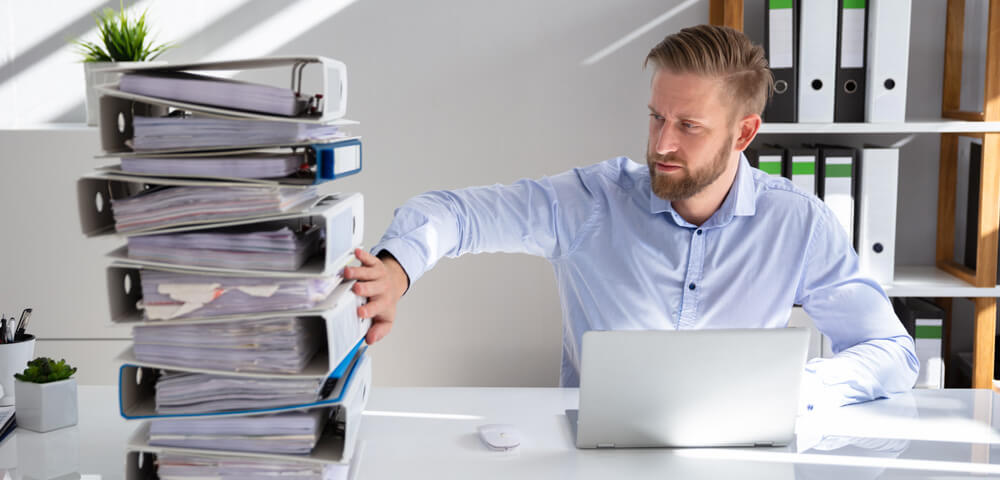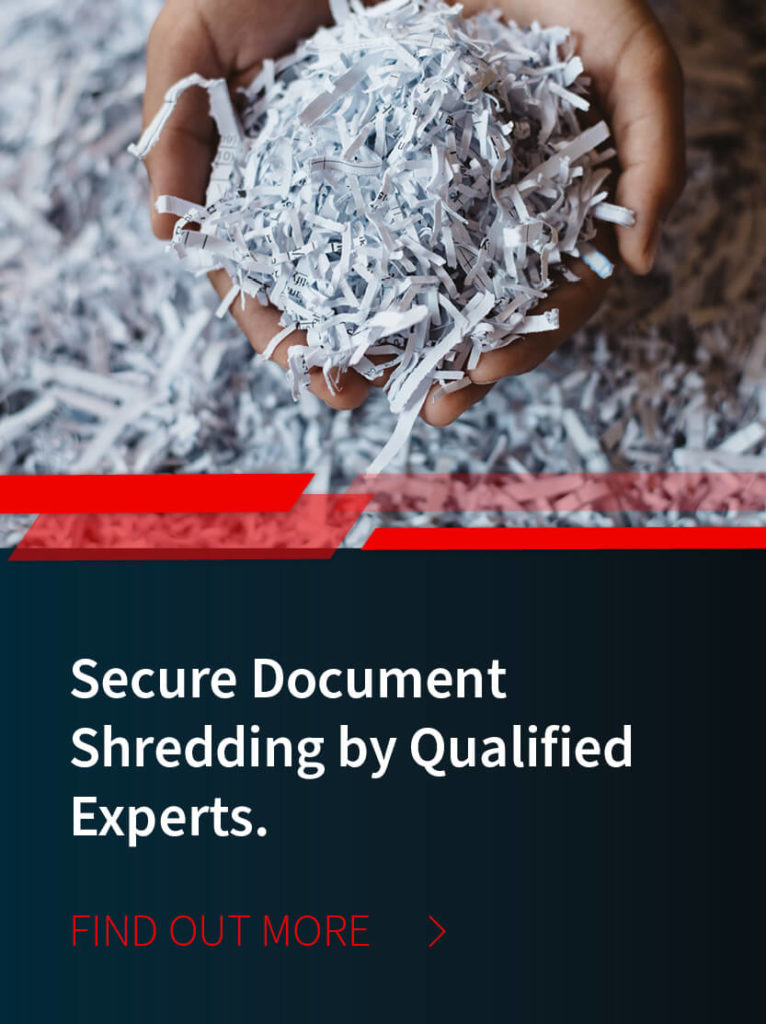
/ IN THIS BLOG
The race is on for industries to reduce their environmental impact and improve their processes, and a big step for many is eliminating unnecessary paper waste. Moving to a paperless office can eliminate needless waste and even improve efficiency. But a paper-to-digital conversion leaves one big question: What should organizations do with the leftover documents? Let's take a look at the benefits and challenges of paper-to-digital conversions and how commercial shredding can help manage confidential document disposal.
01 / Why Make the Change From Paper to Digital?
The transition from paper to digital documents is a big undertaking, and there are several challenges frequently encountered, but the benefits definitely make it worth it for most businesses. Several key reasons to make the switch include:
Increase Protection for Important Documents: Paper documents are just that - paper, and paper is vulnerable to fire, moisture, and other disasters. Though storing multiple copies separately can help to mitigate the risk, this also increases the volume of paper and eventually your waste. And this still doesn’t entirely address their vulnerability in certain cases. Making the paper to digital conversion can potentially protect documents from nearly all disasters.
Reduce Wasted Space: Storing paper documents takes up a lot of space. Bulky filing cabinets can quickly clutter up offices, consuming valuable real estate. In contrast, digital storage can take as little space as a simple hard drive or even no space at all by storing documents offsite through cloud storage solutions.
Improve Access to Important Records: Anyone who has had to work with paper records knows how difficult it can be to navigate crowded filing cabinets looking for a specific document. Even the most organized systems can leave workers spending significant time and energy attempting to find what they need. However, employees can easily and efficiently locate digitally stored documents by using search functions.
Eliminate Harmful Paper Waste: Paper documents are not only inconvenient but also harmful to the environment. According to data from The World Counts, U.S. offices use 12.1 trillion sheets of paper every year, and this paper not only requires cutting down trees, but also the use of harmful toxins which are a necessary part of the paper manufacturing process. These chemicals can leach into the environment when they end up in landfills.
It is clear that converting from paper to digital documentation holds a lot of key benefits, but what can your organization do with the paper records it already has in storage?
02 / Converting From Paper To Digital
Transitioning from paper to digital documentation is a big step. It has to start with making a plan to convert existing documentation into a digital format, ensuring workers are aware of how to use these new digital documents, and arranging for confidential document disposal for the original copies. Let's take a closer look at each of these steps.
03 / Converting Paper Documents to a Digital Format
The process of digitizing paper documents requires making a digital image of them, converting the data into a usable format, and indexing them to ensure they are easy to access. For those with limited numbers of paper documentation, this may be as simple as using a scanning app on just about any smart device. However, those with a larger quantity of documentation may benefit from dedicated scanning devices or even an imaging service to handle bulk quantities.
04 / Helping Staff Adjust to the Change
Simply digitizing documents is not enough. You should involve staff in these changes so they will be prepared to use the new digital systems effectively. It’s crucial to inform employees of any plans to make the paper-to-digital switch, train them on how new systems work, and provide any needed support to ensure a smooth transition.
05 / Dispose of Unnecessary Paper Documentation
Now that you have digitized the original paper documentation, your facility should dispose of old paper copies, as they are not only unnecessary but may also pose a liability. In many, if not most, cases, paper documentation contains confidential information such as proprietary business information or even client or employee data.
You would never knowingly release such information to the public, so, likewise, you shouldn’t leave unnecessary copies of information around, as this poses a risk of a security breach. Confidential document disposal is a crucial last step in any paper-to-digital transition.
The best way to do this is by shredding the original documentation, but in most cases, a simple desktop shredder won't be enough. Not only will the average office shredder be unable to handle the bulk quantities of documentation required, but they can't offer the necessary level of security.
For confidential document disposal, the final product must be left completely unable to be put back together. Many small-scale shredders only offer vertical cuts, leaving the potential for reassembly. A commercial shredding service such as MCF Environmental can provide a far more thorough destruction process, ensuring that no one can reassemble your documents.
06 / Trust a Professional with Your Document Destruction Needs
Converting from paper to digital can benefit organizations in many ways. From improved efficiency and lower costs to reducing their environmental impacts, making the change offers numerous benefits. When it comes time to dispose of the original paper copies after digitization has been completed, trust the professionals at MCF Environmental Services to ensure confidential documents are disposed of properly.
Our commercial-grade shredding services ensure documents are securely transported in sealed containers directly from your location to our shredding facilities. We render your documents permanently unrecoverable, preventing potential legal liabilities or reputational damage. Ready to completely unburden your business of its paper archives? Reach out to MCF Environmental for a quote and next steps.
Robert Losurdo
President, COO








